Muscle Spasms: Symptoms, Causes, and Treatment
A muscle spasm is a sudden, involuntary movement in one or more muscles. People may also call it a charley horse, muscle cramp, or twitch. These movements can happen in any body muscle, and they are prevalent. Muscle spasms often occur due to stress, exercise, or dehydration. They are usually not a cause for concern.
What are Muscle Spasms?
A muscle spasm is a sudden, unexpected tightening of one or more muscles. Sometimes called a charley horse, a muscle cramp can be excruciating. Exercising or working hard, especially in the heat, can lead to muscle cramps. Some medicines and illnesses also might cause muscle cramps. Muscle cramps aren’t usually harmful. Self-care measures can treat most muscle cramps.

Factors that might increase the risk of muscle cramps include:
- Age. Older people lose muscle mass. Then the muscles can’t work as hard and can get stressed more easily.
- Poor conditioning. Not being in shape for activity causes muscles to tire more easily.
- Extreme sweating. Athletes who tire and sweat a lot while playing sports in warm weather get muscle cramps.
- Pregnancy. Muscle cramps are common during pregnancy.
- Medical issues. Having diabetes or illnesses that involve nerves, liver or thyroid can increase the risk of muscle cramps.
- Weight. Being overweight can increase the risk of muscle cramps.
Signs and Symptoms of Muscle Spasms
Muscle cramps occur mainly in leg muscles, most often in the calf. Cramps usually last for seconds to minutes. After the cramp eases, the area might be sore for hours or days.
Muscle cramps usually go away on their own. They don’t usually need medical care. However, see a healthcare provider for cramps that:
- Cause severe discomfort
- Have leg swelling, redness or skin changes
- Come with muscle weakness
- Happen often
- Don’t get better with self-care
What Causes Muscle Spasms?
A muscle cramp can happen after working a muscle too hard or straining it, losing body fluids through sweat or simply holding a position for a long time. Often, however, the cause isn’t known.
Most muscle cramps are harmless. But some might be related to a medical concern, such as:
- Not enough blood flow. A narrowing of the arteries that bring blood to the legs can cause cramping pain in the legs and feet during exercise. These cramps usually go away soon after exercise stops.
- Nerve compression. Pressure on the nerves in the spine also can cause cramping pain in the legs. The pain usually gets worse with walking. Walking bent slightly forward, such as when pushing a shopping cart, might ease cramping.
- Not enough minerals. Too little potassium, calcium or magnesium in the diet can cause leg cramps. Medicines often prescribed for high blood pressure can cause increased urination, which may drain the body of these minerals.
Treatment, Management, and Prevention of Muscle Spasms

Self-care measures can usually treat muscle cramps. A healthcare provider can show you stretching exercises that reduce the chances of muscle cramps. Drinking plenty of fluids can also help prevent muscle cramps.
If you keep getting cramps that wake you from sleep, a care provider might prescribe medicine to relax muscles or help you sleep.
If you have a cramp, these actions might help:
- Stretch and massage. Stretch the cramped muscle and gently rub it. Keep the leg straight for a calf cramp while pulling the top of your foot on the side that’s cramped toward your face. Also, try standing with your weight on your cramped leg and pressing down firmly. It helps ease a cramp in the back of the thigh too.
- Try pulling the foot on that leg up toward your buttock for a front thigh cramp. Hold on to a chair to steady yourself.
- Apply heat or cold. Use a warm towel or heating pad on tense or tight muscles. Taking a warm bath or directing the stream of a hot shower onto the cramped muscle also can help. Rubbing the sore muscle with ice also might relieve pain.
The recommended medication you can use:
- Baclofen – is in a class of medications called skeletal muscle relaxants. Baclofen acts on the spinal cord nerves and decreases the number and severity of muscle spasms caused by multiple sclerosis or spinal cord conditions. It also relieves pain and improves muscle movement.
Juvenile Arthritis: Symptoms, Types, Risk Factors, Causes, and Treatment
The most common type of Juvenile Arthritis that children suffer from is at the age of 16. Certain forms of this condition can lead to serious complications, including growth issues, joint injuries, and eye inflammation. Treatment is focused on reducing inflammation and pain, improving the eye’s function, and avoiding injuries.
What is Juvenile Arthritis?
Juvenile arthritis (JA), or pediatric rheumatic disease, is not a specific condition. It’s a broad word to define the inflammatory and rheumatic conditions that can develop among children who are younger than. The conditions affect more than 300,000 children and teens across the United States.
The majority of JA are auto-inflammatory illnesses. The immune system is designed to defend against foreign invaders, such as bacteria and viruses, which becomes misguided and releases an inflammatory chemical that attacks healthy cells and tissues. It leads to joint swelling, inflammation, and tenderness in most JA instances. However, some forms of JA are not accompanied by joint symptoms or affect only the internal organs and the skin.
Types of Juvenile Arthritis
There are many kinds of arthritis in juveniles. The classification is based on the following factors:
- Symptoms
- The types and number of joints are involved
- There are certain markers in the blood
Doctors’ classification of juvenile arthritis can help predict the disease’s development.
The most common types of juvenile arthritis include:
Oligoarticular
Oligoarticular is the term used to describe a small number of joints. In this form of arthritis, only a few joints are affected at a young age. Children younger than 8 years old are more susceptible to developing it. For half of the children with oligoarticular juvenile arthritis, just one joint is typically affected by the ankle or knee. In certain cases, this type of arthritis may require just moderate treatment. For certain children, arthritis affects four or fewer larger joints.
Polyarticular
Around 30% of children with arthritis in their juvenile years have the polyarticular form. This kind of arthritis is to be more prevalent among girls than boys.
Polyarticular juvenile arthritis can affect 5 or more joints, including large joints (knees and ankles) and smaller ones (hands and feet). Most often, both sides of your body can be affected.
Psoriatic
Children who have psoriatic arthritis have arthritis as well as:
- A skin condition that is known as Psoriasis
- Siblings or parents with Psoriasis
They may also suffer from the appearance of a nail and a diffuse swelling of the finger or toe called dactylitis. In certain cases, only some joints are affected; in other instances, multiple joints, including large and small ones, can be affected.
Enthesitis-related Arthritis
Enthesitis-related joint arthritis is a type of juvenile arthritis typically causes inflammation of tendons, joints, and ligaments. It can even affect the spine. Children with this kind of arthritis may experience joint pain but no obvious swelling. They may also suffer from back discomfort.
Systemic
Systemic juvenile arthritis can cause swelling, pain, and limited movement in at least one joint. Other signs include rash and inflammation in internal organs like the liver, heart, spleen, and lymph nodes. A fever of 102deg per day for two weeks or more suggests this diagnosis.
Signs and Symptoms of Juvenile Arthritis
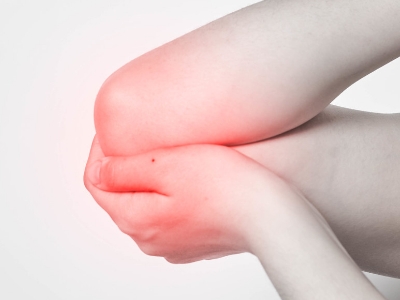
Symptoms can change with time. There are times when symptoms are more intense and are referred to as flares, and when symptoms improve and get better, they are referred to as Remission. These symptoms and signs are:
- Joint pain
- Swelling
- Fever
- Stiffness
- Rash
- Fatigue
- Appetite loss
- Inflammation of the eye
The trouble with everyday tasks like dressing, walking or playing
What Causes Juvenile Arthritis?
The root cause of juvenile arthritis is unclear. Like many autoimmune diseases, the individual cases could be due to a mix of genetic causes, environmental exposures, as well as the immune system of the child.
Risk Factors for Juvenile Arthritis
Juvenile arthritis develops in the adolescent and young adult years. Children from any race and ethnic background are susceptible to the illness.
It’s uncommon to have families with more than one member family develop JA. However, children with older family members with chronic arthritis are more likely to be affected. A family member who has Psoriasis is one of the risk factors for developing a form of JA.
Treatment, Management, and Prevention of Juvenile Arthritis
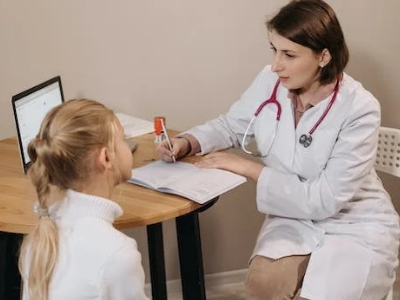
A child who has juvenile arthritis needs an intervention from a pediatric Rheumatologist. The doctor specializes in helping children with arthritis and other related ailments.
The treatment for juvenile arthritis is intended to:
- Reduce swelling
- Continue full motion of the affected joints
- Reduce the pain
- Maintain the normal development of joint
The recommended medication is:
- Naproxen is a drug used to treat muscle pain and cramps. Naproxen is part of a group of medicines known as NSAIDs. It blocks your body’s ability to produce a substance that causes fever, pain and inflammation.
What Is Abdominal Pain?
Everyone experiences abdominal pain from time to time. Other terms to describe abdominal pain are stomachache, tummy ache, gut ache, and bellyache. The pain can be mild or severe. It may be continuous or come and go. Abdominal pain can be short-lived or occur over weeks, months, or years.
What Are Abdominal Cramps?

Abdominal pain is discomfort anywhere in your belly between your ribs and pelvis. We often think of abdominal pain as stomach pain or a stomachache, but the pain in your abdomen could be coming from other organs besides your stomach.
Your abdomen is home to your:
- Stomach
- Liver
- Gallbladder
- Pancreas
- Small intestine
- Large intestine
These are all organs in your digestive system. But pain can also be in your abdominal wall, the skin, and the muscles that make up the outer shell of your abdomen. And sometimes, the pain that you feel in your belly may be coming from somewhere else, like your chest, pelvis, or back.
Abdominal pain can take many forms and can mean many things. It may feel:
- Mild or severe
- Dull or sharp
- Burning or achy
- Crampy or colicky
- Constant or intermittent
- Localized or generalized
Ultimately, abdominal pain is a subjective symptom that only you can describe. Since your healthcare provider can’t measure it, it’s what you say it is. Your healthcare provider will always take your abdominal pain seriously.
What Are The Symptoms Of Abdominal Cramps?
Abdominal pain may take several different forms. In addition to how severe it is, abdominal pain can be as:
- Generalized Pain. It refers to pain felt in more than half of your abdominal area and is typical of stomach viruses, indigestion, or gas as the cause of your pain.
- Localized Pain. It refers to pain felt in just one area of your abdomen and is typical of a problem with an organ like your stomach, appendix, or gallbladder as the cause of your pain.
- Cramping. This type of pain comes and goes, or changes in severity or perceived position in your abdomen. Cramping is rarely severe and is typical of gas, passing a stool, or menstruation as the cause of your pain.
- Colicky Pain. Like cramping, this type of pain comes and goes but tends to be severe and starts and ends suddenly. It’s typical of kidney stones or gallstones as the cause of your pain.
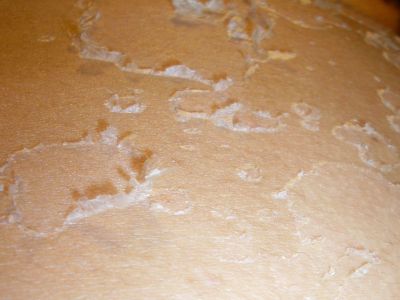
It’s essential to call your doctor if your abdominal pain is so severe that you can’t move without feeling more pain or sit still in a comfortable position. Seek immediate medical attention if any of the following symptoms accompany your abdominal pain:
- Fever
- Bloody stool
- Nausea and vomiting that don’t resolve
- Weight loss
- Yellowish skin
- Abdomen very tender to touch
- Swollen abdomen
How to Treat Abdominal Pains?
The treatment of abdominal pain will depend on its underlying cause.
Mild abdominal pain may go away on its own within hours or days. Mild pain and related symptoms can also often treat with medicines from the pharmacy. Your pharmacist will be able to advise you on what type of product is best suited to your situation. It would be best not to use aspirin or anti-inflammatory medicines, such as ibuprofen, to treat abdominal pain other than period pain. These medicines may cause or irritate a stomach or bowel problem.
If you are treating mild abdominal pain with a known cause at home:
- Keep hydrated by drinking clear fluids; restrict alcohol, tea, and coffee
- Stay rested
- Use a hot water bottle or warm wheat pack on your abdomen
- Eat bland foods when you can start eating again, or as advised by your doctor
Medicine recommended to treat abdominal pain include:
- Baclofen is used to help relax specific muscles in your body. It relieves the spasms, cramping, and tightness of muscles caused by medical problems.
Does Abdominal Pain Need Treatment?
Abdominal pain has many possible causes. Some aren’t serious and get better independently in a few days. Others need more testing and treatment. If your pain continues or worsens, you need to be rechecked and may need more tests to determine what is wrong. You may need surgery to correct the problem.
Don’t ignore new symptoms, such as fever, nausea and vomiting, urination problems, worsening pain, and dizziness. These may be signs of a more severe problem. Your doctor may have recommended a follow-up visit in the next 8 to 12 hours. You may need more tests or treatment if you are not getting better.
The doctor has checked you carefully, but problems can develop later. If you notice any problems or new symptoms, get medical treatment immediately.
Nociceptive Pain Caused By Injury
Nociceptive pain is discomfort due to your body’s response to damage to your tissues. Most pain you experience is nociceptive, commonly affecting your muscles, joints, and bones. Although it is sharp in nature, it goes away as soon as its underlying cause is healed.
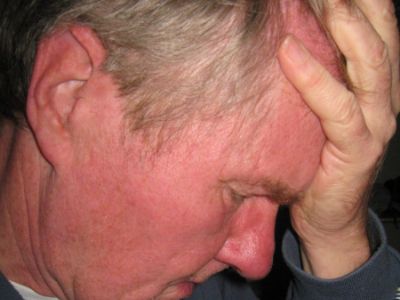
Types of Nociceptive Pain
- Radicular pain. Radicular pain occurs when the nerve roots are irritated. It goes down your arm or leg through a nerve from the spinal cord. It causes numbness, weakness, and tingling or feelings of pins and needles, among other symptoms.
- Somatic pain. Somatic pain happens due to activated pain receptors in your tissues. This type of pain is often stimulated by movement. It’s usually localized. Headaches and cuts are both considered somatic pain.
- Visceral pain. Visceral pain happens due to the inflammation or injury of internal organs such as the heart. Visceral pain is often vague, occurs frequently, and feels like a deep ache or pressure.
Nociceptive vs. Neuropathic Pain
Neuropathic pain is linked with damage to the body’s neurological system, typically caused by an infection. It is generally described as shooting pain that travels along the nerve. On the other hand, nociceptive pain arises from actual or threatened damage to non-neural tissue due to the activation of the nociceptor.
What Does Nociceptive Pain Feel Like
Nociceptive pain feels sharp, aching, or throbbing. People commonly experience this condition in the musculoskeletal system. This includes the joints, muscles, skin, tendons, and bones. Left untreated, it can interfere with your daily life and make it difficult to move, causing mobility issues.
Examples of Nociceptive Pain
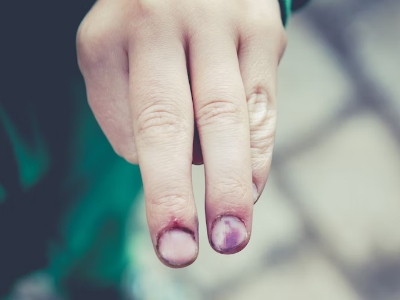
- Cuts
- Bruises
- Sprain
- Joint arthritis
- Crash injury
- Broken bones
- Joint damage caused by arthritis
- Damage or blockage in your internal organs and soft
- Cancer pain is also usually nociceptive
Treatment for Nociceptive Pain
Treatment for this condition involves treating the underlying condition or waiting for the injury to heal. A combination of pain management strategies such as physical therapy and medications also treats nociceptive pain. Doctors may also recommend prescription medications like opioids or antidepressants, depending on the severity of the condition.
What Are Signs Of Acute Pain?
There are several signs associated with acute pain since the term itself is quite vague and broad. Conversely, if you’re experiencing acute pain, it’s important to take some time off to rest and receive sufficient treatment. After all, the only way to get back on track as soon as possible is to fully heal. Failing to receive proper care can only lead to complications and even more time off the field to do the things you want to get done.
What Is Acute Pain?
Acute pain is a sensation you feel as soon as you experience an injury. For instance, if you slice open a finger while chopping vegetables, break a bone, or fall down the stairs, you are going to feel acute pain. It’s a signal from your body that it has just undergone physical trauma. Commonly, the pain stops once the injury heals.
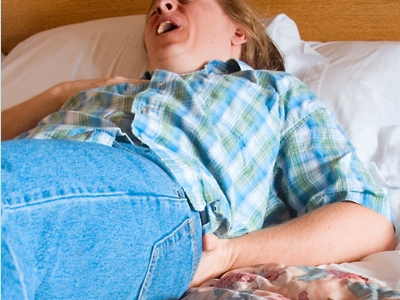
Signs of Acute Pain
Acute pain tends to be of relatively short duration. The most common signs of acute pain may include:
- Weakness
- Numbness
- Sharp pain
- Tingling
- Throbbing
- Stabbing pain
- Burning
Common Causes of Acute Pain
Besides blunt trauma examples, a person could also suffer from acute pain because of any of the following reasons:
- Sprains and strains of a body part
- Going to the dentist
- Giving birth
- Infections on a cut
- Getting burned
- Slipping and falling
- Menstrual cramps
- Passing a kidney stone
- Bumping a body part against a hard surface
The range of pain can vary significantly depending on what’s causing it or the severity of the injury.
Effects of Acute Pain
The effects of acute pain extend far beyond an injured body part. Debilitating pain will affect other areas of a person’s life as well. People suffering from severe pain often find it difficult to sleep or lose their appetite because of it. In a worst-case scenario, it may lead to depression or addiction to pain medication, depending on where the pain is located.

Acute Pain Treatment
Every person’s pain is unique, just as every person’s life is unique. It is also important to provide them with the right pain management treatments and medications. People differ in their pain treatment to ensure that they receive effective treatment based on their unique characteristics.
Initial treatment may include some of the following:
- Opioid medications
- Muscle relaxant medications
- Nonsteroidal anti-inflammatory drugs (NSAIDs)
- Stress reduction
- Resting the affected part of the body
- Application of heat or ice
- Physical therapy
- Exercise
- Bioelectric therapy
A secondary tier of treatments may include
- Antidepressant medications
- Anticonvulsants
- Steroid injections to reduce tissue inflammation
- Acupuncture
- Nerve blocks
- Trigger point injections to treat muscle spasms
Recommended medication:
- Tramadol – this drug is a narcotic-like pain reliever that is effective in managing acute and chronic pain.




